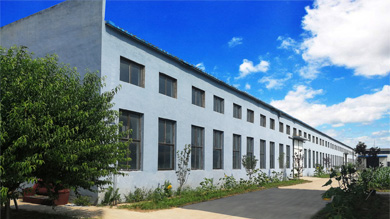វិច្ឆិកា . 21, 2024 20:50 Back to list
non return swing check valve
Understanding Non-Return Swing Check Valves
Non-return swing check valves, often referred to simply as swing check valves, are essential components in various fluid systems, designed to allow fluids to flow in one direction while preventing backflow. Their operational simplicity and reliability make them a popular choice in various applications, including water supply systems, sewage treatment plants, and industrial processes.
Design and Operation
The core function of a non-return swing check valve lies in its straightforward design. These valves typically consist of a disc (or flap) mounted on a pivot within the valve body. When fluid flows through the valve in the designated direction, the disc swings open, allowing the fluid to pass. However, if the flow direction reverses, the fluid pressure pushes the disc back against the seat, creating a seal that prevents backflow.
This mechanism is particularly beneficial in preventing potential damage to pumps and other equipment downstream
. Backflow can introduce contaminants into a clean water supply or cause flooding in drainage systems, making the non-return swing check valve a vital protective measure in many installations.Applications
Non-return swing check valves are widely used across various industries. In municipal water supply, they help maintain the integrity of the water distribution system by preventing contaminated water from flowing back into the clean water supply. In wastewater management, these valves are crucial in sewer systems, ensuring that sewage does not flow back into treatment plants or residential areas.
Additionally, these valves find applications in HVAC systems, where they help protect pumps from back pressure caused by water returning from heating and cooling loops. In the oil and gas industry, swing check valves are used in pipelines to safeguard against backflow that could lead to system failures or hazardous spills.
Advantages
non return swing check valve

One of the primary advantages of non-return swing check valves is their low-pressure drop across the valve when in the open position, which ensures efficient flow. Unlike other types of check valves, such as globe check valves, swing check valves present minimal resistance to flow, making them ideal for systems where pressure loss needs to be minimized.
Furthermore, swing check valves can be installed in both horizontal and vertical orientations, offering flexibility in system design and installation. Their robust construction typically involves materials capable of withstanding high pressures and corrosive environments, ensuring durability and long service life.
Considerations
Despite their many benefits, there are some considerations when selecting and installing non-return swing check valves. The disc's weight and the angle of the valve must be taken into account, especially in applications with pulsating flow, where excessive vibration could lead to chatter, potentially damaging the valve or connected equipment.
Moreover, these valves are engineered for specific flow rates, and selecting the appropriate size is crucial to ensuring optimal operation. Undersized valves can lead to premature wear and failure, while oversized valves may cause turbulent flow that can affect system performance.
Conclusion
In summary, non-return swing check valves are indispensable components in many industrial and municipal applications, providing a reliable means of preventing backflow and ensuring fluid integrity in systems. Their simple yet effective design, combined with the advantages of low-pressure drop and flexibility in installation, make them a preferred choice for engineers and system designers.
As industries continue to evolve and prioritize system efficiency and reliability, understanding the role and function of non-return swing check valves will remain crucial for anyone involved in fluid transport and management. Whether you are designing a new system or maintaining an existing one, these valves play a significant role in safeguarding the integrity and efficiency of fluid systems worldwide.
Share
-
Reliable Wafer Type Butterfly Valves for Every IndustryNewsJul.25,2025
-
Reliable Flow Control Begins with the Right Ball Check ValveNewsJul.25,2025
-
Precision Flow Control Starts with Quality ValvesNewsJul.25,2025
-
Industrial Flow Control ReliabilityNewsJul.25,2025
-
Engineered for Efficiency Gate Valves That Power Industrial PerformanceNewsJul.25,2025
-
Empowering Infrastructure Through Quality ManufacturingNewsJul.25,2025